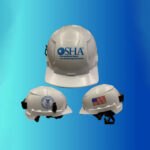Workplace safety isn’t just about following regulations—it’s about protecting your employees, maintaining productivity, and avoiding costly accidents. While most businesses focus on the obvious dangers, like heavy machinery or hazardous materials, some safety risks are easy to overlook until they cause a problem. Here are some of the most commonly ignored workplace hazards and how to address them before they lead to injuries.
1. Poor Ergonomics
The Risk: Many workers spend hours lifting, bending, or using tools that strain their muscles over time. Poor ergonomics can lead to repetitive strain injuries, back pain, and even long-term musculoskeletal disorders.
How to Prevent It:
– Provide ergonomic workstations with adjustable chairs, anti-fatigue mats, and proper lighting.
– Train employees on safe lifting techniques and encourage frequent breaks to stretch.
– Use mechanical aids, like forklifts or dollies, to reduce strain from heavy lifting.
2. Cluttered Walkways and Workspaces
The Risk: A messy workplace increases the chance of slips, trips, and falls—one of the most common causes of workplace injuries.
How to Prevent It:
– Keep aisles and exits clear of tools, boxes, and cables.
– Implement a housekeeping schedule to remove debris and spills immediately.
– Use proper storage solutions, like shelving and labeled bins, to keep everything organized.
3. Improper Use of Personal Protective Equipment (PPE)
The Risk: Even when PPE is provided, employees often don’t wear it correctly or at all, exposing themselves to unnecessary risks.
How to Prevent It:
– Ensure all workers are trained on the proper use and maintenance of PPE.
– Conduct regular inspections to ensure compliance.
– Provide comfortable, well-fitted PPE to encourage usage.
4. Forklift and Pedestrian Safety Neglect
The Risk: Warehouses and industrial sites often overlook pedestrian safety when forklifts and other machinery are in use. Poor visibility, tight corners, and lack of training increase the risk of serious accidents.
How to Prevent It:
– Designate clear pedestrian walkways and forklift zones.
– Install mirrors, warning signs, and flashing lights in high-traffic areas.
– Train both forklift operators and pedestrians on safe navigation in shared spaces.
5. Fire and Electrical Hazards
The Risk: Faulty wiring, overloaded circuits, and improperly stored flammable materials can create fire hazards that go unnoticed until it’s too late.
How to Prevent It:
– Regularly inspect electrical systems for signs of wear or damage.
– Keep fire extinguishers accessible and ensure employees know how to use them.
– Store flammable materials away from heat sources and follow OSHA guidelines for hazardous materials.
Final Thoughts
Workplace safety isn’t just about big, obvious risks—it’s about addressing the small hazards that add up over time. By being proactive and implementing these safety measures, you can reduce injuries, improve efficiency, and create a safer environment for everyone.
What safety hazards have you noticed in your workplace? Share your experiences in the comments!



